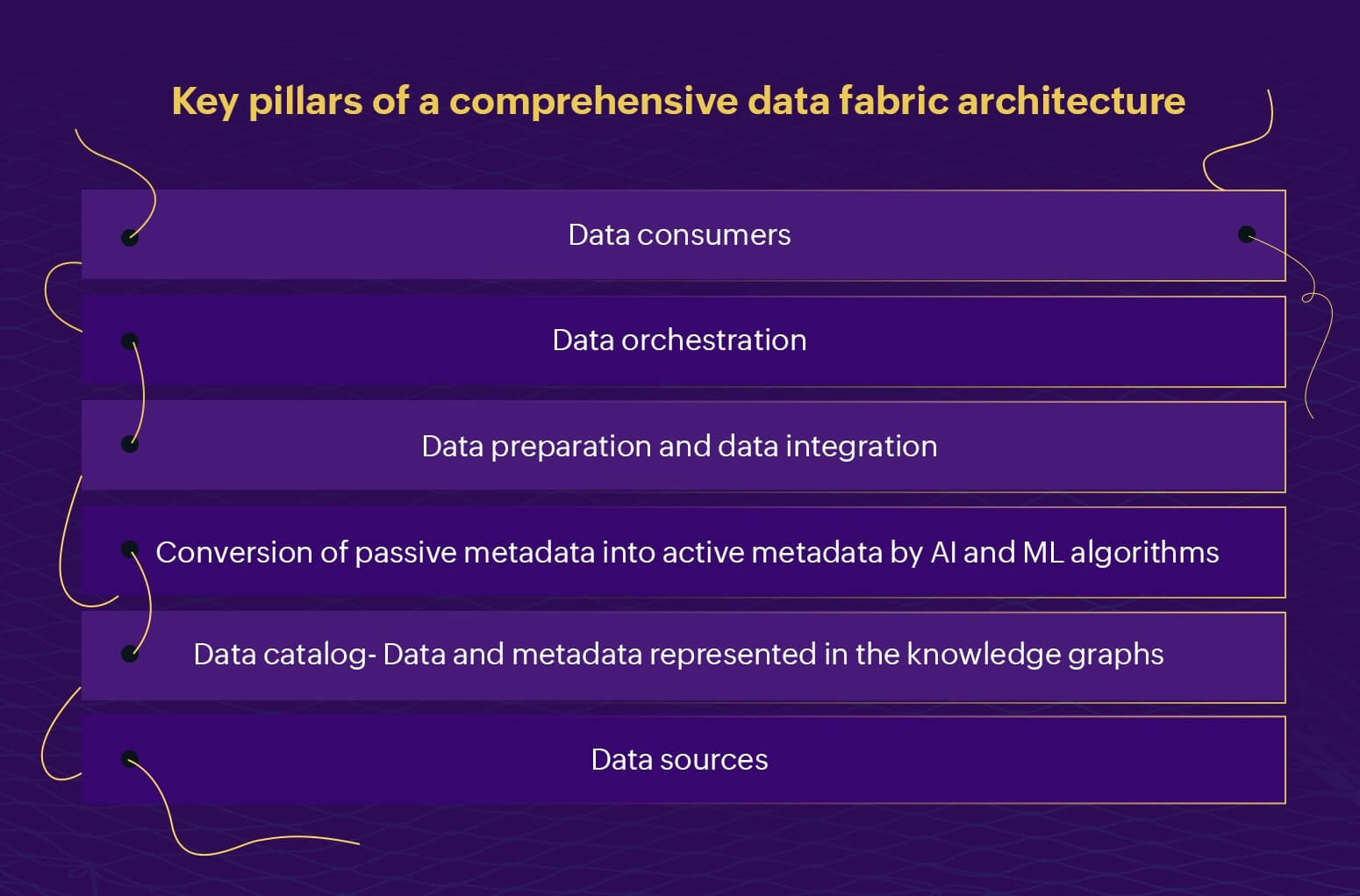The term "data fabric" has been creating quite a buzz recently. Just like "cybersecurity mesh" that I covered in my earlier blog, Gartner has identified "data fabric" as a top strategic technology trend for 2022. This brings us to the most obvious and yet essential question: What is data fabric? And how will it impact your organization and the cyber world?
Data fabric is a new data design concept that provides an efficient and seamless integration of different data sources and processes across multiple platforms and resources. This approach allows the data to be readily available everywhere and easily accessible to all users. It uses both human and ML capabilities to form a consolidated platform.
In simpler terms, data fabric can be understood as a needle that sews together all the disparate data sources and processes, and provides an integrated framework to manage data. By adopting the data fabric approach, organizations can discard the old, traditional siloed approach.

Let's discuss the key pillars of an integrated and comprehensive data fabric architecture as described by Gartner:
With a data fabric architecture, organizations can identify, collect, connect, and analyze all the different forms of metadata, which is information including what the data contains and how it is integrated. The metadata can be in different forms, including technical, business, social and operational.
Data fabric can help convert passive metadata to active metadata. The passive metadata is static in nature and is usually predesigned, such as data schema, data models, or business definitions and glossaries. The active metadata is dynamic in nature and helps with information on constantly changing parameters such as data frequency. Organizations should aim to create a data fabric design that will help with continuous analysis of the metadata and provide important metrics and insights. It should then demonstrate these insights in the form of easy-to-understand graphical models. AI and ML algorithms should also be deployed to automate data integration designs over time.
Inside the data fabric design, AI and ML driven engines continuously analyze the passive metadata and convert it into active metadata. Graph models are built based on these conversions, which are further used by AI and ML algorithms to automate the data integration across the organization's infrastructure and improve it over time.
The architecture can enable organizations to develop knowledge graphs that provide intuitive and actionable metrics to data and analytics leaders for making better business decisions. The knowledge graphs are a representation of data and metadata which helps connect data from multiple points flexibly. It also makes it easier to understand the complex data by creating a semantic layer of known business terms on top of technical names of the data fields.
Data fabric must have a strong data integration backbone and it should be compatible with different data delivery styles such as streaming, messaging, data virtualization, and more. It should also support all types of data users, like IT and business users.
In today's world, where cyberattacks are increasing at an alarming rate and adversaries are becoming more sophisticated in their malicious ways, it is imperative for us to assess if the data fabric approach is cyber secure or not. Let's have a look at both sides of the coin!
Integrating data from different endpoints, users and resources is definitely an efficient way to bring enormous amounts of data under one unified umbrella. The centralized nature of the data fabric approach allows the data to be accessed by several different resources and users efficiently. It helps the users of geographically diverse organizations access data irrespective of their physical locations. The use of AI and ML technology makes this approach more powerful, and rules out the traditional and repetitive chores performed by the data engineers like data discovery and its profiling, data enrichment, and cleansing. The architecture is also promising because of its scalability; it does not require organizations to worry about the times when they might need to expand their business and produce a greater amount of data.
However, the approach also raises some important cybersecurity concerns as the entire business data of an organization is consolidated within one comprehensive platform. This makes it easier for adversaries to find vulnerabilities, and gain access and compromise enormous amounts of business critical data in one place. The data transport from one point to another in the data fabric should also be carefully handled as any loophole in the data traversal can act as a potential threat situation.
With continuous globalization and enormous amounts of data being churned, the data fabric approach could be a boon for business. However, given that there are different moving parts to the data fabric architecture, it is also paramount for organizations to design the infrastructure carefully and work on its security, to be prepared for any potential cyberattack.
Hope this blog helped you to learn about data fabric. Stay tuned for more trending topics in cyberspace. Happy reading!
You will receive regular updates on the latest news on cybersecurity.
© 2021 Zoho Corporation Pvt. Ltd. All rights reserved.